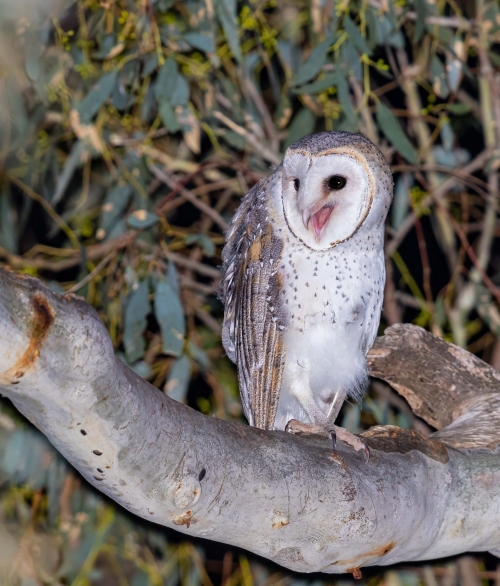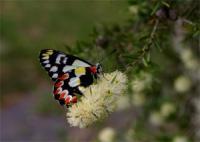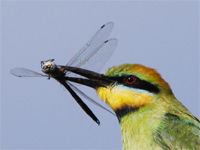After admiring some of the amazing images of the recent aurora australis I headed out last night in the hope of capturing some shots of this extraordinary phenomenon.
Upon my arrival at the chosen spot I could hear an Eastern Barn Owl calling close by and directly behind me (north) from its perch in a massive River Red Gum. Cursing my failure to bring the necessary gear I hurried home to rectify the situation and returned … the owl was continuing to call repeatedly from the same perch.
As I fumbled with camera, tripod and flash another individual arrived, rodent in its beak, passed it to the calling bird which then disappeared into a nearby hollow. What to make of all this?
The bird pictured below was the recipient of the rodent. I think it’s an adult female – somewhat boldly marked underneath and no real sign of juvenile down, although perhaps some vestiges on the back? Was the adult female passing the kill to juveniles?
It reappeared some minutes later and flew to another perch higher in the tree, continuing to call enthusiastically. When I returned a couple of hours later there were no owls to be seen – just some soft hissing calls from the hollow.
The last image is my aurora fail … missed by 24 hours it seems!

Eastern Barn Owl, Green Gully, 12th May 2024

II

III

IV

Looking south at the remnants of an aurora!





































































